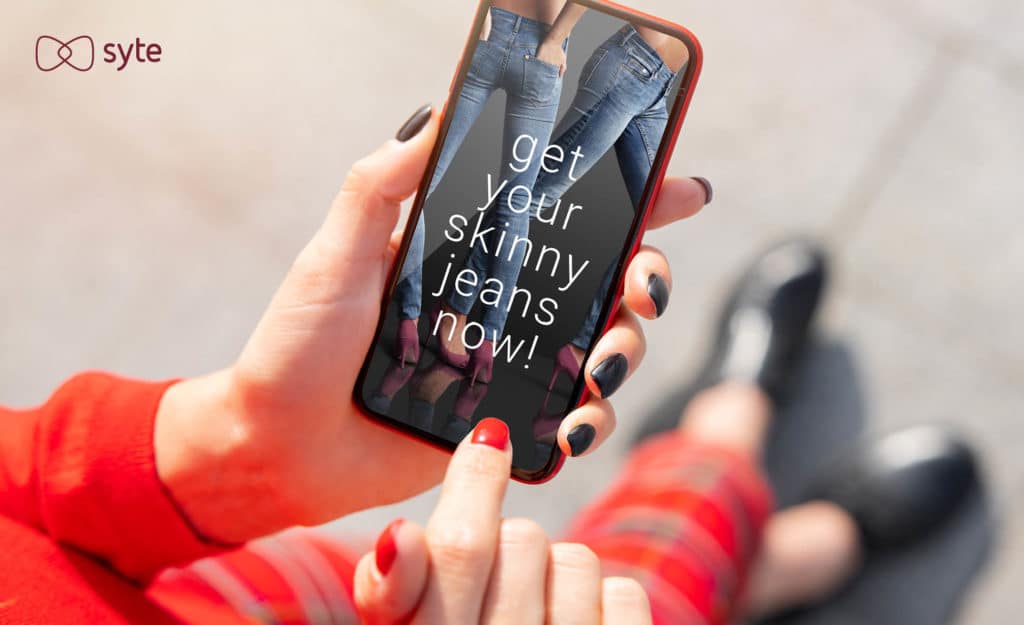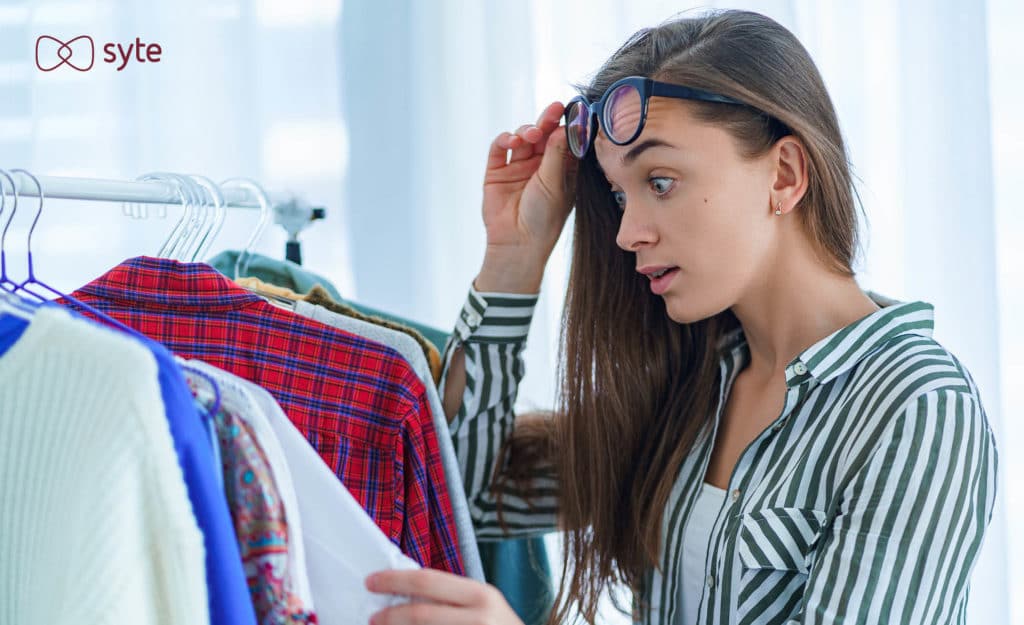New fashion trends do not just happen overnight—like fashion design and creation, they take effort and careful consideration. “Shackets” and boiler suits, bucket hats, and baguette bags became part of the global fashion consciousness through deliberate planning, manufacturing, and displaying. Everything from how trends develop to how many pieces are manufactured and when and where they’re sold is part of a rich fashion ecosystem. This process is a science as much as it is an art — and it has a name: fashion merchandising.
In this post, we will dig into the definition, history, key principles and best practices of fashion merchandising so that you can take your retail business to the next level.
What is Fashion Merchandising?
A simple way to define fashion merchandising is the planning and processes that go into buying and selling products in order to make a profit. A more detailed definition of fashion merchandising, for our purposes, is the planning that goes into promoting and displaying the most relevant products at the right time, in the right place, in just enough quantity, and with appropriate pricing. To accomplish this, a number of factors are taken into consideration, such as customers’ point of view, past and current sales, merchandise selection, brand image, the economy, and product promotion.
As such, successful fashion merchandising requires meticulous planning and careful coordination between buyers, store managers, visual merchandisers, marketing specialists, and consultants. There are a variety of important tasks to think about, such as account organization, stocking, advertising, the calculated presentation of displays, and the discovery of consumer trends.

To be more specific, fashion merchandising covers the following functions:
- Anticipating fashion trends that dictate manufacturing and production
- Purchasing pieces and collections to sell
- Determining retail prices
- Showcasing products in an enticing manner, be it online or offline
- Planning and making advertisements
- Creating campaigns and promos to encourage purchase
The History of Fashion Merchandising
Fashion retail merchandising has come a long way over the centuries. One of the biggest and most noticeable shifts in the industry has been centered around the value placed on consumer demands. In ancient times, merchants and traders did not prioritize the actual wants and needs of potential customers — instead they tried to convince shoppers of the importance of their products with little regard to the actual quality or practicality of their goods.
The markets and bazaars of yore have now transformed into department stores and malls that exist purely to fulfill consumer needs. The shoppers have become the most critical element in fashion merchandising — their desires dictate the types of products created and sold across the board. The customer experience is also tailored to consumer behavior and expectations, making shopping more personalized in the modern era.

This focus on customer demand is also what drives eCommerce, which allows modern shoppers to find apparel they want to add to their closets from the palm of their hands. According to RetailDive, at least 87% of shoppers begin their customer journey with an online product search. Therefore, knowing what shoppers are looking for and how they are searching for those items has changed the way brands and retailers operate. Gathering customer data has become extremely important and can range from surveys and focus groups to deep analytics. The results of these data collection techniques ultimately dictate how brands approach the design, production, and distribution of their inventory.
How Fashion Merchandising Works
Fashion merchandising covers quite a few different roles. There are manufacturers and retailers, buyers and account managers, visual merchandisers and marketers, just to name a few. Here, we will discuss the main responsibilities of each of these roles and how they fit into the bigger picture of fashion merchandising.
What is the role of manufacturers?
Manufacturers play an active role in predicting fashion trends and catering to consumer desires. They look at and determine the nitty-gritty details of each product, covering everything from sizes, styles, colors, and quantities to prices. In deciding these things, manufacturers always consider the demands of retailers and consumers. Then they work with designers to create the products that will generate the most revenue.

How do retailers fit into the picture?
Like manufacturers, retailers also forecast fashion trends by carefully analyzing customers’ wants and needs. They curate their product catalogues based on the details that shoppers demand, such as colors, patterns, trends, and prices. The economy, previous and current sales, and global events are also considered. Retailers then either order from manufacturers or create their own lines.
What do fashion merchandisers do?
A fashion merchandiser can fall into one of many fields in the fashion industry. Among these are product development, production, buying, trend forecasting, and distribution. Fashion merchandisers can also work with designers to create designs that are in line with the desires of the target market and the needs of the brand or retailer. The decisions of fashion merchandisers can determine everything from the direction of a marketing campaign to, ultimately, the success of a brand.
Some of the careers that deal with fashion merchandising include:
- Account managers who keep an eye on the relationships of brands and retailers with manufacturers
- Buyers who create buying plans, coordinate with manufacturers, pursue trends on fashion and trade shows, and order supplies of merchandise
- Store managers who hire, train and supervise employees while monitoring sales
- Visual merchandisers who determine how products are displayed in a physical and/or online store in order to entice customers to buy
Principles of Fashion Merchandising
To be successful at fashion merchandising, there are three key principles to keep in mind: You must have the right merchandise available at the right time and at the right price. With this focus, you can better understand which products consumers want; when, where, and how they make purchases; and what prices will drive the highest demand. As a result, effective fashion merchandising allows you to not only reach your anticipated sales goals but also to deliver an excellent experience for the end-users—your customers.
Principle 1: The Right Merchandise and Quantity
Know your customers
Providing customers with a valuable shopping experience makes them more likely to purchase. One of the most effective ways to do this is getting to know your customers’ tastes and styles. When you understand their preferences, you can create and promote the right products through a customized shopping journey.
Knowing your customers means that you have taken the time to ask a few key questions, such as:
- Who is shopping on your site? Are they business professionals deeply intent on moving forward in their career and looking for brands and merchandise that reflect that lifestyle?
- What is their preferred method of product discovery? Are they using the search bar to hone in on specific products or using an inspiration gallery to lead them to new products?
- What contextual clues can you glean about their real-time goals? The same shopper might have been looking for back-to-school clothing for their fifth-grader yesterday and then returned today seeking a formal dress for a friend’s upcoming wedding.

Keep your stock inventory up-to-date
In addition to thinking about the relevance of your products, you need to think about the quantity of your merchandise. Fashion trends tend to change depending on the season, and fashion cycles are often short. As such, the demands of your customers will also vary in a given time. Successful brands and retailers know this and use this information to anticipate and plan in advance the type and quantity of merchandise to have in stock, as well as how to display these products effectively on their homepage and across the entire site.
Remember, shoppers are more likely to seek products they need now instead of shopping in advance — so it’s extremely important to make sure your items are stocked and advertised according to current trends and consumer demand forecasts. For example, if your homepage is still advertising skinny jeans when relaxed fit denim is the current trend, an online shopper can easily be swayed to purchase from another site showcasing the pants they’re looking to find.
 If this shopper is searching for relaxed fit denim jeans and she reaches a homepage showcasing last season’s skinny jeans, she will swipe to the next site that has current promotions for the type of jeans she wants to buy.
If this shopper is searching for relaxed fit denim jeans and she reaches a homepage showcasing last season’s skinny jeans, she will swipe to the next site that has current promotions for the type of jeans she wants to buy.
Principle 2: The Right Time and Place
Pay attention to the visuals
There’s simply no underestimating the impact of how your website looks. A report from Stanford found that 75% of customers base the credibility of a business on its web design. Beyond that, the aesthetics of your website can instill emotions in your customers. Your design can make them feel excited, happy, or confident – it’s up to you to decide which direction you want to pursue.

So, how can you ensure that your fashion merchandise stands out?
- Choose brand colors that can be consistently applied to every page for harmony
- Design all text to be easily readable
- Ensure that all of your images align with your brand, whether editorial or product images
- Display up to four images per row on PLPs
- Standardize images to include the same angles and background colors
- Try to display clothing on a variety of models, so shoppers can picture themselves wearing them
Design the buying experience based on customer preferences
Creating customer experiences based on your target audience’s preferences enables you to generate a positive feeling towards your brand. To do this, you must have an idea of how your shoppers find merchandise on your site. That makes it important to think about questions like this:
- Do your customers tend to shop based on color, size, or purpose?
- Are they waiting for promotions before buying in bulk?
- Do they prefer to shop fashion with a mobile device? Google reports that 74% of users say they are more likely to return to mobile-friendly sites.
By implementing a fashion merchandising strategy that caters to these preferences — whether that’s ordering filters to prioritize sorting by brand or ensuring all color variants are visible on your product detail pages — you can make it easier for customers to sift through your offerings and find the products they have in mind.
Principle 3: The Right Price
Establish a balance between value and profit

Finally, the last essential thing to consider for effective fashion merchandising is price. Pricing is an important consideration regardless of the kind of customer you’re targeting. According to recent research, 60% of customers consider the price first when shopping online. Brands and retailers need to decide on the margin required for a given product, while determining the perceived value of that item to customers.
Reasonable pricing can optimize your sales so it’s crucial to pinpoint just the right amount to charge. Important factors to consider when determining pricing include:
- Your brand identity (e.g. fast fashion vs. luxury)
- Your competition
- Your overhead expenses
- The economic climate
Fashion Merchandising Best Practices
Now that you know the principles to practice when conducting fashion merchandising, here are four clothing merchandising tips that you can follow to maximize profits and improve the shopping experience.
Tip 1: Create Strategic Displays
Because shopping for fashion merchandise is highly visual, you need to strategize product displays. Similar to meticulously placing items on shelves in physical stores, online brands and retailers also need to be calculated in product promotion.
This starts with the homepage, which is often what shoppers see first. Think about your homepage like a virtual window display where customers can get a comprehensive preview of your catalog. You can highlight the most relevant product collections by basing the recommendations on on-site interactions. You can also keep your display current by featuring the latest releases, seasonal items, and trendy pieces.
Use recommendation engines throughout the shopping journey — from product detail pages to the checkout page — to help customers find the products they desire faster and easier. When they see related items, they are also more inclined to add additional products to their cart. For example, 35% of all Amazon purchases come from product recommendations.

We already mentioned how much price matters to customers when they purchase. With promotions, brands and retailers are giving shoppers more reason to buy because they can purchase more items for less than usual. It’s no surprise, therefore, that sales and discounts drive traffic and revenue. However, it’s extremely important that you carefully choose the right promotions for your brand.
Discounts have an impact on everything from margins to brand equity. Research has shown that deep or frequent discounting can actually lower the value of a brand. It can cause consumers to believe that quality has been reduced or that they should simply wait to purchase until the next round of sales. To preserve the value and standard of your brand, you need to make sure your promotions reflect your company culture. For example, fast fashion companies might offer monthly or quarterly discounted bundles while luxury brands may do very few, but regular seasonal sales such as Black Friday and Cyber Monday as well as the holiday season.
Tip 3: Level Up with Personalized Product Discovery
According to Epsilon, 80% of shoppers are more likely to purchase from brands that allow for a personalized experience. This makes it extremely profitable to apply personalization to your product discovery process. You can apply this technology to recommendation carousels, search results, and product layout pages to inspire shoppers to ultimately buy more products.
For example, if a shopper previously searched for “pleated brown leather skirt” and then navigated to your “What’s New” page, you can prioritize the product placement on that page to display all of your dark leather skirts in the first row. You can also use product recommendation carousels to draw shoppers’ attention to additional items that match their taste and style.
Tip 4: Reflect on the Data
As we discussed above, consumer demands drive trends and can help you determine the most relevant fashion merchandise to secure. To stay ahead of the trends as well as the competition, brands can implement specific digital solutions based on data.
One of the most effective data-driven solutions is deep product tagging. When your products have organized and accurate tags, you can easily monitor their status with a greater understanding of granular details. For example, you may easily notice that a specific shirt is selling like crazy — but with deep tagging, you may also discover that every item with the same type of sleeve is also flying off the “rack.” Ultimately, deep tagging allows you to look beyond the SKU level to the actual product details so that you can predict trends and anticipate consumer demands. This enables you to optimize inventory, manufacturing, and distribution based on accurate reports and projections of product sales, demand, and supply.
The Big Picture
There is more to fashion than just design. From planning and manufacturing to displaying items, fashion merchandising is a deliberate process. With the help of innovative technologies, brands and retailers can predict trends more accurately, make fashion merchandising more efficient, and deliver more engaging customer journeys that ultimately drive up conversion and increase profits.